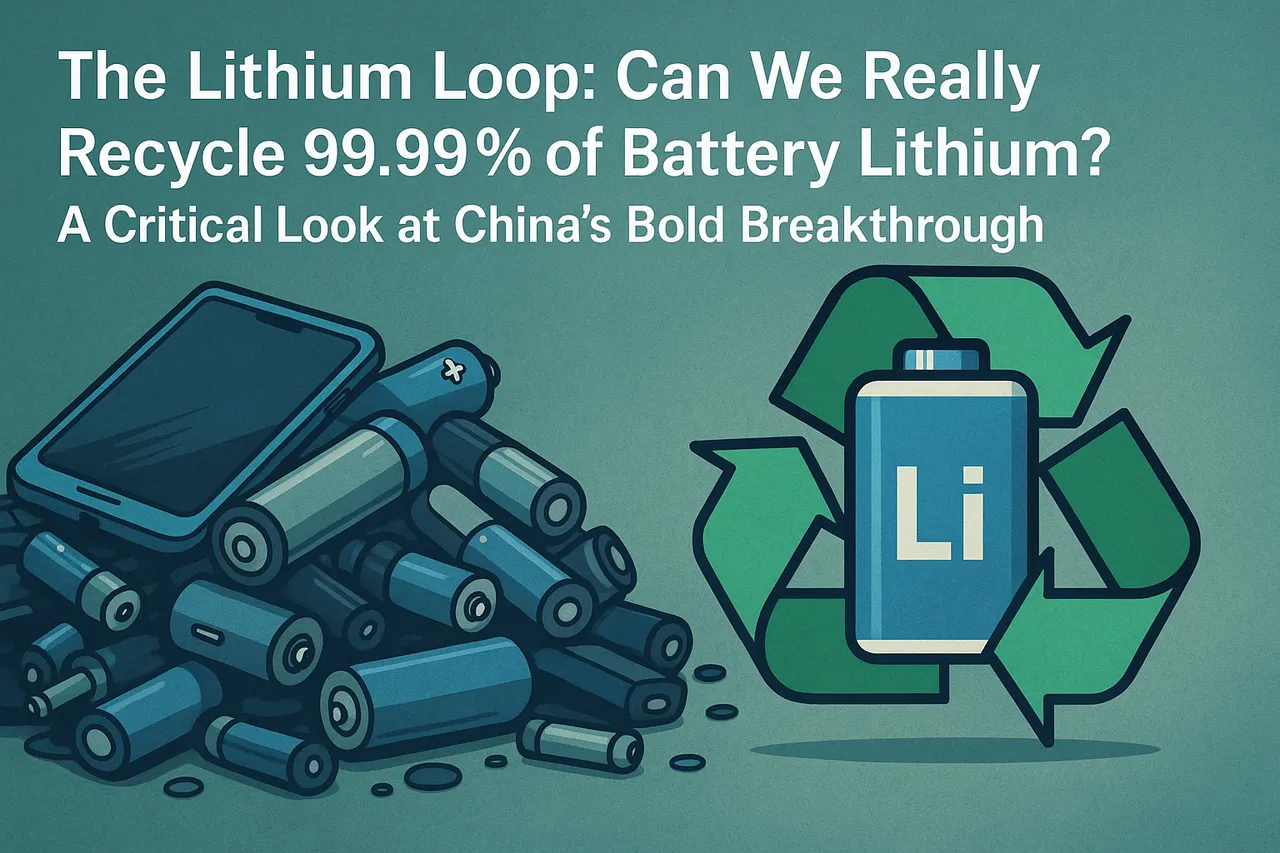Take a moment to count the gadgets around you. Your smartphone, smartwatch, laptop, earbuds, electric toothbrush, etc. Nearly everything rechargeable depends on one humble but powerful mineral: lithium. This silver-white metal is the heartbeat of our digital lives, tucked away in the lithium-ion batteries that power the modern world. From powering your daily TikTok scroll to driving Teslas on highways, lithium is the silent enabler of convenience, connectivity, and carbon-cutting ambition. But while we charge forward into an electric future, we’re quietly accumulating a growing mountain of dead batteries. The question is, what happens to them?
Until recently, the answer was simply not enough. Most lithium-ion batteries end up in landfills, poorly recycled, or burned off. These end in wasting precious metals and posing ecological hazards. That’s why a recent breakthrough by Chinese scientists has sent shockwaves through the scientific and sustainability communities. They claim to have developed a new chemical process that can recover 99.99% of lithium from used batteries. This would be a potential game-changer for energy storage, electric vehicles, and environmental responsibility.

A look at the breakthrough
Developed by researchers from Central South University and Guizhou Normal University in partnership with the National Engineering Research Center of Advanced Energy Storage Materials, the method utilizes a glycine-based neutral leaching technique. Glycine, a naturally occurring amino acid, replaces traditional corrosive chemicals in the extraction process. Within just 15 minutes, the process recovers nearly all of the lithium content along with over 90% of nickel, cobalt, and manganese from spent lithium iron phosphate (LFP) batteries. The result was a high-yield recovery with drastically reduced environmental impact.
Traditional battery recycling methods are messy and inefficient. They often involve pyrometallurgical or hydrometallurgical processes that either incinerate the battery or soak it in toxic solvents. These methods recover only around 50–70% of lithium and release pollutants during processing. In contrast, the new glycine-based approach avoids secondary pollution altogether. The byproducts generated during the extraction process are benign and can even be reused as fertilizer, setting a new benchmark for green chemistry in battery recycling.
This innovation is especially critical as the world races toward decarbonization. According to the International Energy Agency (IEA), demand for lithium is expected to increase by over 400% by 2030, fueled largely by electric vehicles and renewable energy storage. But lithium mining, primarily concentrated in the Lithium Triangle of South America, comes with its own environmental and ethical concerns. Water depletion, habitat destruction, and exploitative labor practices have marred lithium’s green image. Recycling could ease that burden dramatically, reducing dependency on raw extraction while creating a sustainable supply loop.
The challenges ahead
Yet, this story isn’t entirely frictionless. There are hurdles before we can declare the lithium loop closed. First, scalability is a major unknown. Laboratory efficiency rarely translates perfectly to industrial conditions. Variables such as heat control, waste management, and economic cost all increase exponentially outside the lab. Next is the issue of battery chemistry diversity. While this process is optimized for LFP batteries, other battery types such as NMC (nickel-manganese-cobalt) may require additional adaptations. Lastly, an effective recycling ecosystem needs not just science, but infrastructure such as collection programs, disassembly facilities, and public awareness.
One must also consider the energy cost of the recycling process itself. If powered by coal-heavy grids, even the greenest chemistry can become carbon-intensive. Thus, to truly realize the environmental potential of this breakthrough, recycling plants must be paired with clean energy sources such as solar, wind, or hydro.
Despite these challenges, the breakthrough is a strong signal that circular battery economics are within reach. Companies like Redwood Materials and Li-Cycle are already building the foundation for closed-loop battery ecosystems in North America. If this glycine-based method proves commercially viable, it could significantly boost global efforts to scale battery recycling, cut e-waste, and decouple lithium supply from geopolitically sensitive regions.
Final Thoughts
The science is clear. Our future won’t just be powered by lithium, but must also be sustained by how we recycle and reuse it. For every dead phone, spent EV battery, or broken power bank, there’s a wealth of usable lithium waiting to be reborn. The Chinese innovation could be the key that unlocks this potential, creating a battery lifecycle that’s less linear, more local, and infinitely renewable.
In a world where our lives are increasingly battery-powered, learning to close the lithium loop might be one of the most powerful moves we make, not just for technology, but for the planet.